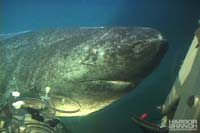Articles and reports from the Life Sciences and chemistry area deal with applied and basic research into modern biology, chemistry and human medicine.
Valuable information can be found on a range of life sciences fields including bacteriology, biochemistry, bionics, bioinformatics, biophysics, biotechnology, genetics, geobotany, human biology, marine biology, microbiology, molecular biology, cellular biology, zoology, bioinorganic chemistry, microchemistry and environmental chemistry.

First comprehensive view of protein activity in higher organism
UCSF scientists have developed a set of powerful tools that allow researchers to look in unprecedented detail at the full complement of thousands of proteins acting and interacting in a living organism. They have used the new tools to mine nearly the entire proteome of an organism – discovering what proteins are active in each cell, where they are active and in what quantity.
The results, published in two papers

During a recent submersible dive 3,000 feet down in the Gulf of Maine a HARBOR BRANCH scientist and sub pilot had the first face-to-face meeting ever in the deep sea with a rare Greenland shark. The docile 15-foot creature gently rammed into the submersible’s clear front sphere before turning and swimming slowly away. The entire encounter was captured on video, a clip of which can be viewed by clicking under the shark’s photo at: http://www.at-sea.org/missions/maineevent4/day14.html
HARBOR

Writing in this week’s issue of Nature, Professor Paul Pearson relates how he discovered an account of the theory – regarded as one of the most important in the history of science – in a rare 1794 publication by geologist, James Hutton. Darwin’s Origin of Species was published in 1859. Professor Pearson tracked down a copy, which runs to three volumes and more than 2000 pages, in the National Library of Scotland. Couched in the middle of the second volume is a whole chapter on the selection

Contrary to what your music teacher told you, it does not take decades of piano practice to learn to play phrases on the piano without looking at your fingers. A brain map linking finger movements with particular notes begins to form within minutes of starting training, according to research published this week in BMC Neuroscience. Recent brain imaging studies of professional musicians have demonstrated that silent tapping of musical phrases can stimulate auditory areas of the cortex and hea

Nature has evolved clever ways to prevent animals from different species from successfully reproducing. As published in the upcoming issue of Genes & Development, molecular biologists at UC Irvine are gaining a better understanding as to how.
In the October 15th issue, Drs. Noriko Kamei and Charles Glabe report on the identification of a receptor on the surface of sea urchin eggs that regulates the species-specific adhesion of sperm.
External fertilization can be risky business, e

In line with the dogma of molecular biology “DNA makes RNA makes protein”, RNA molecules have largely been thought of as intermediaries between the information encoded in the genome and the proteins that do the work. More recently, however, it has become clear that RNAs play far more active roles in most if not all plant and animal species.
We know that small RNAs that do not encode proteins themselves can regulate messenger RNA molecules that do. They bind to their specific targets, which